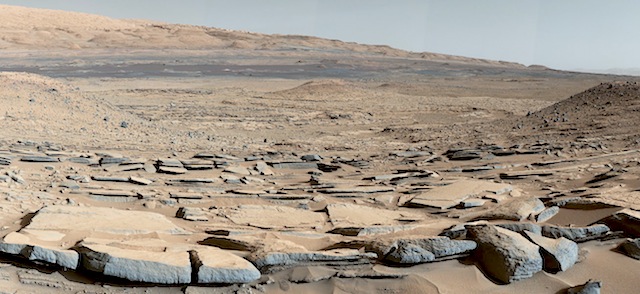 A new study from the team behind NASA’s Mars Science Laboratory/Curiosity has confirmed that Mars was once, billions of years ago, capable of storing water in lakes over an extended period of time.
A new study from the team behind NASA’s Mars Science Laboratory/Curiosity has confirmed that Mars was once, billions of years ago, capable of storing water in lakes over an extended period of time.
Using data from the Curiosity rover, the team has determined that, long ago, water helped deposit sediment into Gale Crater, where the rover landed more than three years ago. The sediment deposited as layers that formed the foundation for Mount Sharp, the mountain found in the middle of the crater today.
“Observations from the rover suggest that a series of long-lived streams and lakes existed at some point between about 3.8 to 3.3 billion years ago, delivering sediment that slowly built up the lower layers of Mount Sharp,” said Ashwin Vasavada, Mars Science Laboratory project scientist at NASA’s Jet Propulsion Laboratory in Pasadena, California, and co-author of the new Science article to be published Friday, Oct. 9. [More at links]








